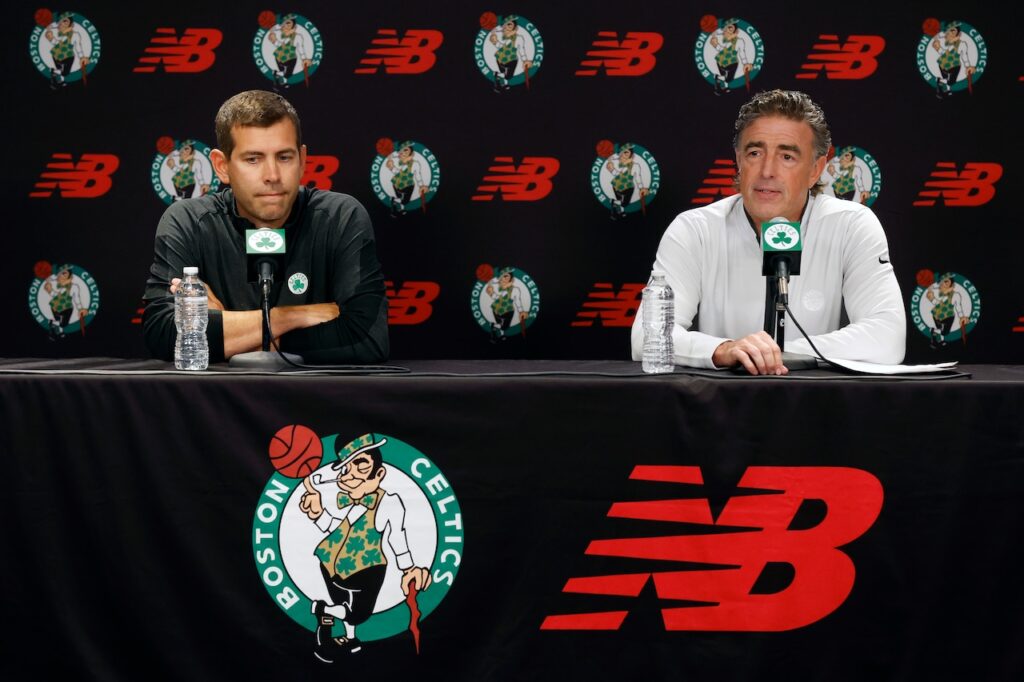The Celtics offseason was going to be full of tough questions even before Boston lost its All-Star to a ruptured right Achilles tendon in New York on Monday night. That offseason is coming on the horizon far quicker than most expected following Jayson Tatum’s injury with the team now just one game from elimination.
With Boston’s title window seemingly closed for the present, the questions now start looming for the future. Tatum is expected to miss significant time next season at minimum after undergoing surgery for the Achilles tendon rupture on Tuesday.
Let’s look at the options the Celtics have at their disposal, along with the tough choices they have to make this summer and beyond after the brutal injury to their star.
Disabled player exception
There is no easy path to salary cap relief in the NBA for teams with an injured player. If a player is seriously injured, his team can apply for the disabled-player exception to replace him. An NBA-designed physician would have to determine that the player is “substantially more like than not” to be out through June 15 next season for it to be granted. The Celtics successfully applied for a DPE when Gordon Hayward went down with a season-ending ankle injury in 2018.
The Celtics obviously would not go down this path unless they were certain Tatum had to miss at least 12 months with the Achilles tear. There’s no replacing a superstar like Tatum for the Celtics, and even being granted a DPE wouldn’t do much for Boston. Tatum makes $54.1 million next season, but the max any team can be awarded for a DPE is the mid-level exception ($14.1 million) for next season. A team can use that on a single player via free agency (one-year deal max) or as a trade exception. However, given that Boston’s salary commitment for next season is already in record-breaking tax territory, it’s highly unlikely that Boston would use this DPE without cutting significant payroll elsewhere. Not really a valuable consolation prize for a team that could be undergoing a reset without their star.
Offseason options
Beyond the DPE, there are essentially no real ways here for Boston to improve the roster without cutting lots of their payroll in the first place. Boston is currently projected to have about $231 million in payroll committed to 11 players next season, including Tatum. That’s roughly $24 million over the second apron and nearly $40 million over the luxury tax line.
Jayson Tatum: $54.1 million
Jaylen Brown: $53.1 million
Jrue Holiday: $32.4 million
Kristaps Porzingis: $30.7 million
Derrick White: $28.1 million
Sam Hauser: $10 million
Payton Pritchard: $7.2 million
Baylor Scheierman: $2.6 million
Xavier Tillman: $2.5 million
Neemias Queta: $2.3 million
Jordan Walsh: $2.2 million (non-guaranteed)
First round draft pick: $2.5 million
Boston would only have their own draft picks and would only be able to offer veteran’s minimum to free agents as a second apron. Boston could make trades but wouldn’t be able to aggregate (combine salaries) to pull them off or take back any more money than they send out in a deal.
With no clear path to improve amid those restrictions and a record-breaking tax bill awaiting, the Celtics taking a step back to a greater degree than anticipated could become a compelling path for the front office. Getting below the second apron ($207 million) would be a no-brainer. Getting under the luxury tax line entirely ($187 million) also would make sense from a financial and team-building perspective.
Boston will need to stay out of the luxury tax for two straight years to get the harsh repeater tax to reset. However, cutting the tax bill entirely for one year creates far more flexibility for the team with trade and free agency options going forward. The cost savings from the tax could also be put towards next season as well.
How the team elects to cut that type of payroll won’t be easy if they go down this path. The Celtics will have to pull off several deals to trim that kind of big money unless they find teams willing to take sizable deals into cap space (highly unlikely without Boston sweetening the pot).
It will be Brad Stevens’ duty to explore the best way to trim salary while building for the future with these types of moves in the event that Tatum’s absence lasts for most or all of next season. That means considering possibilities for even a guy like Jaylen Brown must be in play with the price is right from Boston’s end. Jrue Holiday, Kristaps Porzingis and Sam Hauser all become logical trade candidates as well.
A true reset was going to have to come at some point this decade after Boston pushed all-in two summers ago with Holiday and Porzingis creating a huge payroll. That choice remains a huge success after the 2024 title. Tatum’s injury, however, may ultimately close the door on this core‘s window to contend as composed far earlier than expected.


